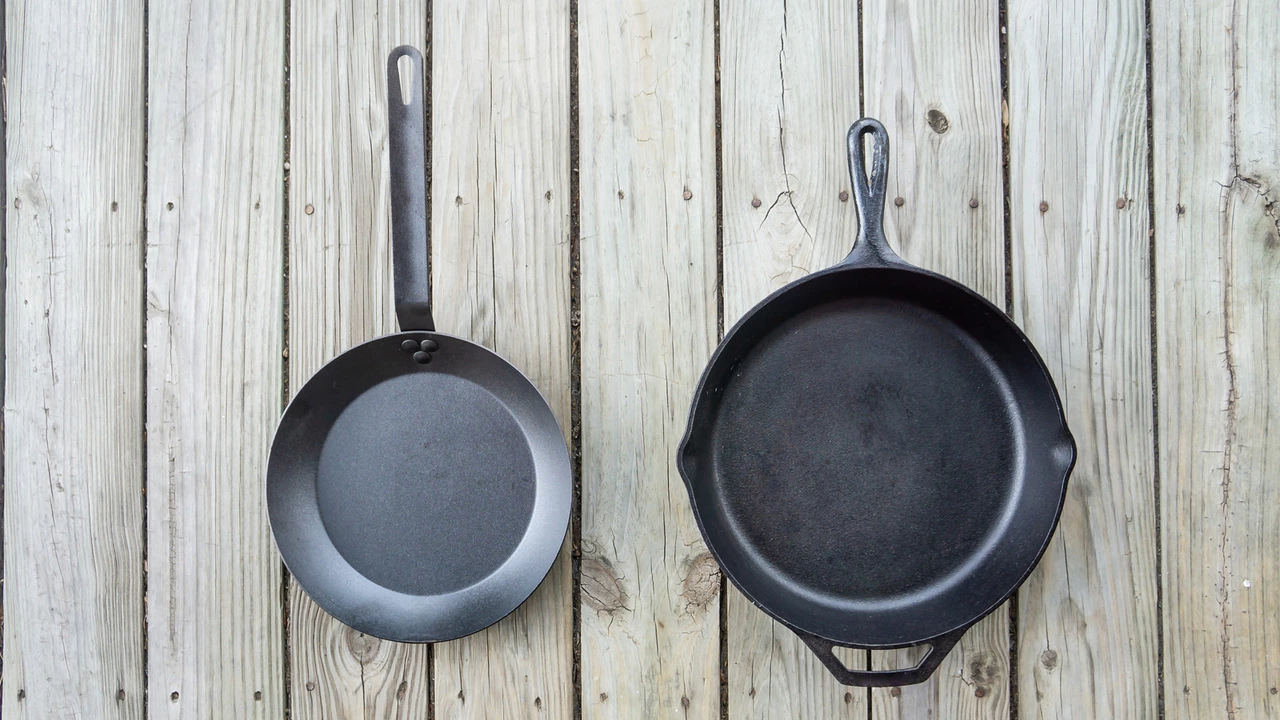Engaging The Iron-Clad Question: Are Cast Iron and Carbon Steel Interchangeable?
Once upon a time, Lila, my other half, posed an intriguing question to me. She asked, "Xander, are cast iron and carbon steel interchangeable?". That moment sparked the launch of my detailed exploration into the heart of the matter that I am about to unfold in this article.
Setting Stage: The Basic Composition of Cast Iron & Carbon Steel
The exciting journey begins with an exploration into the intricate nuances encompassing the elemental compositions of cast iron and carbon steel. Cast iron, a group of iron-carbon alloys, embraces an expansive carbon content typically straddling between 2.1% to 4%. In contrast, carbon steel's building blocks are more reserved, with a maximum carbon content of about 2.0%. With the extra carbon in the mix, cast iron gets its unique 'friable' characteristic, meaning it can be broked or crumbled with ease.
It is crucial to not let this make you misconstrue cast-iron as weak. It simply behaves differently under pressure than carbon steel, which can withstand more substantial amounts of stress. Carbon steel is malleable, but it also possesses significant strength and endurance. Both materials are indeed iron at their cores, but their carbon mates make a world of difference towards their characteristics.
Under the Lid: Diving Into Key Features
After laying down the groundwork for what constitutes our dual subjects, let's journey a little deeper and uncover the key features that characterize each. Cast iron is recognized for its supreme heat retention. It can maintain a smoking hot temperature for an extended period of time, even after the heat source has been turned off. It's fantastic for slow-cooking recipes where a consistent temperature is desired.
Carbon steel, on the other hand, is known for its heat responsiveness. It heats swiftly and cools down fast as well, offering fantastic control over the cooking process. Perfect for quick sautés, stir-frying or any high-heat, fast-cook dishes like a chef's kiss laced steak.
Getting Hands-On: Cooking Experiences
Now, let's translate these facts into practicality, and swivel into the realm of cooking experiences. Back in our tiny Boston kitchen, cast iron has always been Lila's preferred weapon of choice especially for her legendary beef bourguignon. She loves how the cast iron evenly distributes the heat, saturating the flavors throughout the slow-cooked stew. Yet, it does have a propensity to retain flavors, meaning what you cook today might ghost into tomorrow's breakfast eggs.
When it comes to my domain, the outdoor barbecue, it's carbon steel griddles that run the show. The instant heat response and short cooling time give me absolute control, making sure each burger achieves the perfect sear without giving it the chance to morph into a charcoal biscuit. Yet for all its convenience, carbon steel does require a bit more maintenance to avoid rusting.
A Retrospective Glimpse: Historical Usage
Going beyond our tiny blue kitchen, let's travel back in time and observe the historical usage of cast iron and carbon steel. Cast iron dates back to 5th century BC in China, brewing a legacy of longevity and durability. It even built the backbone of the Industrial Revolution with its use in pipelines and machinery. For their part, carbon steel swords etched the course of Middle Age warfare, known for their strength and flexibility.
Even today, you’ll find both of these materials entrenched in various industries beyond the culinary world, from automotive to construction, all embracing their individual attributes and suitability according to the nature of their task.
A Culmination: The Swapping Game
So, are cast iron and carbon steel interchangeable? A rather simple question, yet, as with all things ironclad (pun intended), it's seldom that simple. Yes, in some circumstances, they can be used interchangeably, particularly in the kitchen. Yet the differences in their behavior under heat and their maintenance requirements make them better suited for specific tasks. To put it succinctly, it is akin to dancing Tango. You could switch partners midway, but each will bring their own unique style, rhythm, and experience to the dance floor.
In conclusion, cast iron and carbon steel have their distinct personalities gleaned from their diverging carbon marriages. While these could be employed interchangeably in certain scenarios, a discerning eye and hand would make the better judgment call suited to their specific needs.
